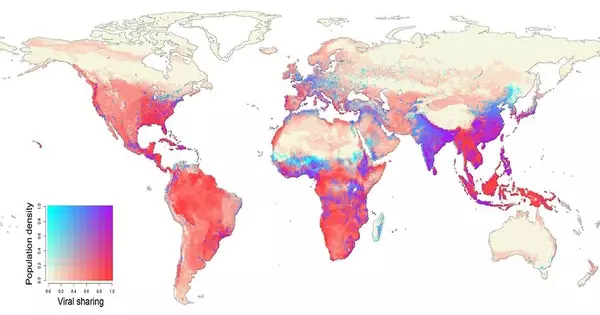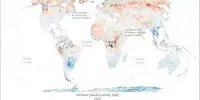According to the authors of a new 120-year case study of a rapidly advancing and retreating glacier in Alaska, a cool pocket climate around the snout of a glacier could help researchers predict how forests will respond to rapid climate change.
You may have noticed a cool pocket of air near a pile of snow while hiking in snowy mountains or trudging by a snowbank on the sidewalk. The same effect occurs in trees near glaciers, slowing their growth. According to a new study published in AGU’s Geophysical Research Letters, trees record the history of cooling in their yearly growth rings.
Many factors influence tree ring growth, including temperature. Cooler, drier conditions cause slower growth and smaller or denser rings in many species. The study, led by ecologist Ben Gaglioti, documents this relationship on the La Perouse glacier and the surrounding Glacier Bay National Forest, providing an unprecedented close-up look at past glacial microclimates.
If the glacier moved back and forth and this microclimate influenced the surrounding forest, we could use it as an experiment to predict how ecosystems will respond to future rapid climate change. But first, they had to determine the seasonality of the microclimate today.
Ben Gaglioti
The team knew the glacier advanced hundreds of meters during the late 1800s, ping-ponged during the early 1900s, and began to retreat around 1950 based on historical accounts, tree cores, and aerial imagery. The following step was to see if the trees recorded any microclimate shifts during those times.
They reconstructed temperatures from 1855 to 2021 using 118 cores from an old-growth yellow cedar forest. After accounting for regional temperatures and elevation, the researchers discovered a distinct slowing of growth as the glacier advanced and an increase in growth rates as it receded. In the summer, the glacier advance cooled the forest by nearly 4 degrees Celsius (about 7 degrees Fahrenheit).
“That was stunning to me,” Gaglioti says. “Because of the glacier’s advance and retreat, the La Perouse forest experienced some of the fastest rates of historical cooling and warming on Earth, but climate models indicate these rates of change will become more common in the next century. Studying these types of glacier-adjacent ecosystems can help us understand how they may respond to the unprecedented rate of warming in the future.”

Camping on ice
Gaglioti and his colleagues stumbled onto the find while studying once-buried layers of trees that had been plowed down by glaciers in the 19th century. While sampling the rainforest trees just outside the glacier’s footprint, they noticed the tree rings had compressed growth during the late 1800s, as the glacier advanced — pushing its bubble of cold air out into the woods.
“Then we had this idea to use temperature sensors to monitor the size and intensity of the cold microclimate around the ice,” Gaglioti explains. “If the glacier moved back and forth and this microclimate influenced the surrounding forest, we could use it as an experiment” to predict how ecosystems will respond to future rapid climate change. But first, they had to determine the seasonality of the microclimate today.
Gaglioti and his colleagues installed a network of temperature sensors for hundreds of meters around La Perouse Glacier and collected data for three years, from July 2018 to July 2021. The microclimate extended at least 600 meters into the forest, the furthest they’d placed sensors. Without more distant sensors, “it’s hard to constrain where it actually ends,” Gaglioti says.
The findings also add an important source of information in reconstructing the movement of past glaciers and their influence on the surrounding biosphere. “If you look at trees that were run over by the ice, you can see the cooling effects as the ice approaches them, before they die,” Gaglioti says. The trees left behind offer important climate records as the glacier retreats, as well as insights into the rate of retreat and possible influences on ecological succession once the ice has gone.
There is still work to be done. The microclimate of La Perouse contains five other tree species, and preliminary results indicate that each species responds differently to climate change. Gaglioti hopes to use these data to better understand how an entire forest responds to large-scale cooling and warming. Similar microclimate records from other locations can be used to investigate the climate sensitivities of other biological systems, ranging from microbes to mammals.
















